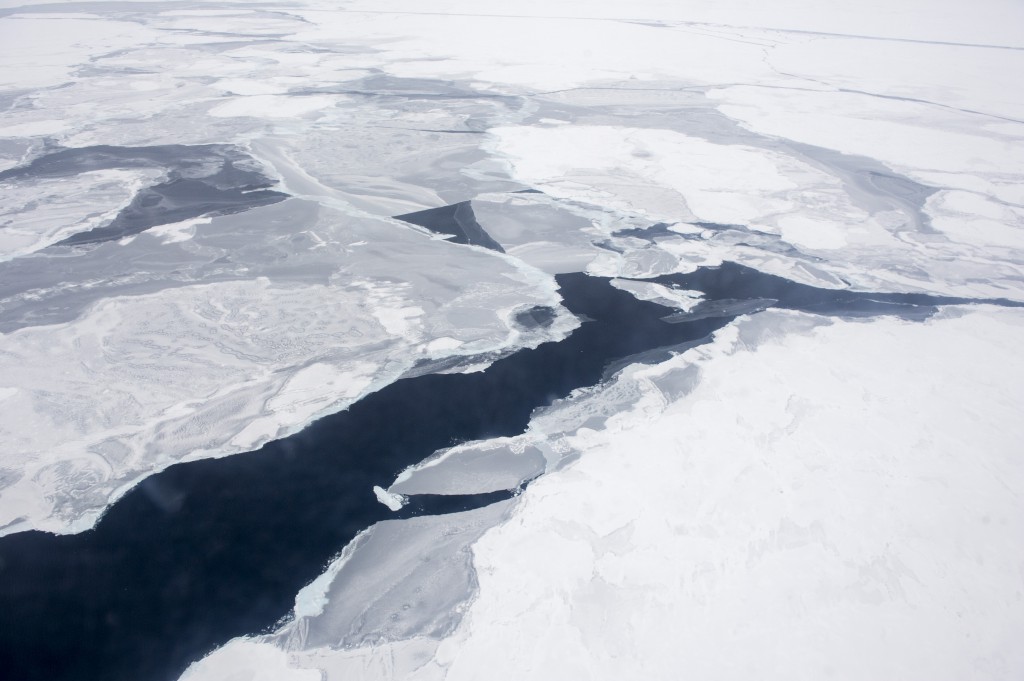The loss of Arctic sea ice — and the effect that has at lower latitudes — could galvanize the world to climate action
OPINION: More research on the links between diminished Arctic sea ice and extreme weather elsewhere could prod the world into meaningful action to slow climate change.

The alarming reports of declining sea ice in the Arctic and the growing predictions of ice-free Arctic summers may yet serve as a wake-up call to the rest of the globe.
The possibility that severe weather in the lower latitudes of the Northern Hemisphere could be linked to the Arctic meltdown is drawing worldwide attention like never before.
Arctic Ocean ice has dropped by about half in four decades and estimates date when the waters will be ice-free in summer has advanced to as soon as 2040. Only 15 years ago, scientists were saying that would not happen until 2100.
The sooner that the rapid pace of Arctic change is recognized as having a global impact, the more difficult it will be to classify it as a regional occurrence that can be safely ignored by those living thousands of miles away.
In the past four years sea ice has been at the lowest levels recorded in the four decades since satellite measurements began.
The Bering Sea and the Barents Sea had low levels of ice cover because of a late freeze-up and warm winter temperatures.
[Bering Sea ice was the lowest in 150 years this winter]
“The Arctic sea ice cover continues to be in a decreasing trend and this is connected to the ongoing warming of the Arctic,” said NASA climate scientists Claire Parkinson. “It’s a two-way street: the warming means less ice is going to form and more ice is going to melt, but also, because there’s less ice, less of the sun’s incident solar radiation is reflected off, and this contributes to the warming.”
While ice reflects light, dark expanses of open water tend to absorb more light, creating more heat.
But what does the shrinking level of sea ice mean beyond serving as an indicator of human-caused climate change?
Atmospheric scientist Jennifer Francis of Rutgers University is among those who contend there is a connection between rapid Arctic warming and droughts, heat waves, cold spells and floods elsewhere in the world.
Francis, who says her interest in the Arctic began with family travels by sailboat in the 1980s, theorizes that the warming Arctic leads to instability in the polar jet stream and shifting weather patterns in the heavily populated regions of the hemisphere.
“It’s not a simple story, but it’s a fascinating one, and I think you’d be hard pressed to find any climate scientist who says that the huge and rapid changes in the Arctic are not affecting mid-latitude weather,” said Francis.
She recently published a paper saying that the links between climate change and extreme events in the middle latitudes are becoming clearer, but the specific role of rapid Arctic warming is far more controversial.
Over the last 65 years, weather records show that extreme winter conditions on the U.S. East Coast have been more likely at times when warm conditions prevailed in the Arctic, new research shows.
[Is warming in the Arctic behind this year’s crazy winter weather in eastern North America?]
As she recently told the New Yorker, “We tend to only see what’s out our windows. In fact, the weather in one place is connected to what’s happening all over the world.”
Francis writes in Scientific American that more than a dozen Arctic climate records that stood for decades have fallen in the past three years.
“New research suggests that rapid Arctic warming also tends to reroute the jet stream in ways that could allow punishing weather patterns to linger across North America, central Europe and Asia longer than usual, subjecting millions of people to unyielding heat waves, droughts or relentless storms,” she wrote.
The jet stream variations can prolong periods of extreme weather.
“Some studies suggest that Arctic warming is closely connected with these wavy patterns; others say proof of the connection is still tenuous. Research on this hot topic is advancing quickly,” she said.
If the world moves quickly to slow carbon emissions and develop ways to remove carbon from the atmosphere, there is time to slow the pace of future change, Francis said.
But it won’t be enough to prevent drastic revisions in what passes for normal. Prepare for the unexpected, she said.
“The old Arctic may have been ruthless, but it was stable. The new Arctic is less predictable and may be changing in ways that are irreversible, with ripple effects on life around the globe,” she said.